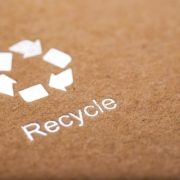Is your Packaging Hard to Recycle?
Packaging design always used to prioritise styles, colours and designs with shelf appeal. To get the right look, designers would mix and match layers of packaging materials and the result could be visually stunning.
Priorities have changed and whilst beautiful packaging is still desired, environmental considerations also impact consumer decisions. Many consumers are shunning brands that use excessive or non-recyclable packaging materials. If your packaging is difficult to recycle, it’s time to go back to the drawing board.
Sustainable Packaging Design
Shoppers want convenience and this extends to every aspect of the buying experience, including recycling packaging. From shipping boxes to product packaging, consumers want to be clear about how to recycle and they want manufacturers and retailers to make it simple.
Building circular economy principles at the packaging design stage is now as important as stunning graphics, typography or colour swatches. These four steps are essential for sustainable packaging:
- The first step to recycling simplicity is to minimise the packaging materials; if possible, stick to one. In a recent article,* DS Smith highlights how mixing materials is hampering recycling efforts.
- Secondly, it is ideal if the material is made from a significant percentage of recycled material.
- Thirdly, that material should be widely recycled – that means through standard household waste collections.
- Finally, the packaging design must include clear labelling. Consumers want to see at a glance if the packaging is recyclable. If your packaging material could be recycled, but not widely, look into alternative options.
Why Corrugated Cardboard Packaging Ticks the Boxes
Corrugated cardboard and paper-based packaging tick the boxes for many products. It is naturally insulating, cushioning and protective. It also contains between 80%and 100% recycled fibres.
Cardboard packaging can be recycled in household collections, with an efficient process for transforming it into new boxes. Consumers are familiar with this material and its eco-credentials. This could be the reason that in a DS Smith also discovered that 49% of consumers wanted to see more paper or cardboard packaging on supermarket shelves.
The fact that consumers recognise corrugated cardboard as sustainable, eco-friendly and recyclable makes it desirable. Coupled with the fact that cardboard boxes are cost-effective secondary packaging and you can see why the Future Market Index predict its continued growth. The FMI insight** suggests that slotted boxes and die-cut boxes for the food and e-commerce market will fuel demand.
In addition, cardboard packaging is easy to print with beautiful graphics, brand messages and product information. Printed boxes add to the appeal and perception of the product. It forms a tangible connection between retailers and customers that can increase brand awareness and loyalty.
Make it Easy for Shoppers to Make Greener Choices
Environmentally-conscious shoppers are influenced by packaging materials and recycling labels. They want to support brands that care and are actively making efforts to reduce environmental impact. They want brands to make it easy and convenient for them to make greener choices.
If your brand is delivering on these fronts, make sure that this is communicated on your website, your shipping boxes and on social posts to gain support and sales. However, if your packaging is excessive and/or difficult to recycle, it’s time to review the options.
Aylesbury Box Company is happy to provide packaging advice. We listen to your requirements and share potential options for design and print. We work with small businesses through to big brands, helping each to combine product protection, aesthetic appeal and sustainability.
For further information on sustainable packaging call 01296 436888 or email enquiries@abcbox.co.uk.





